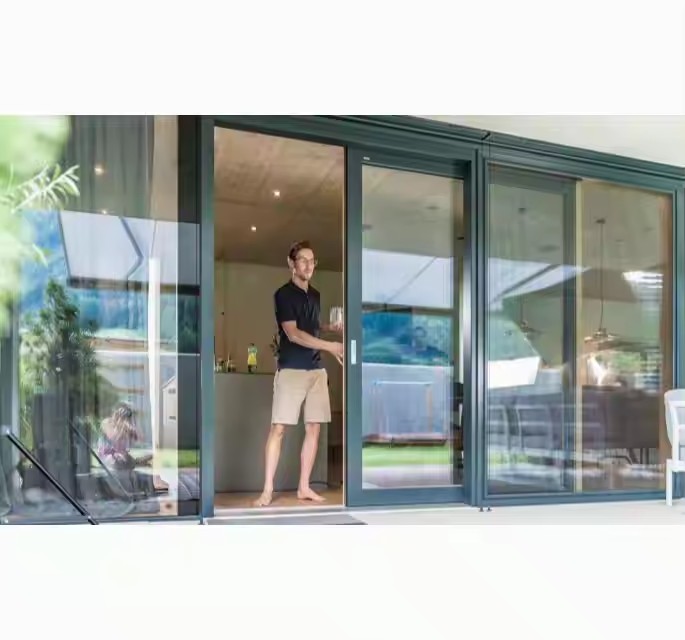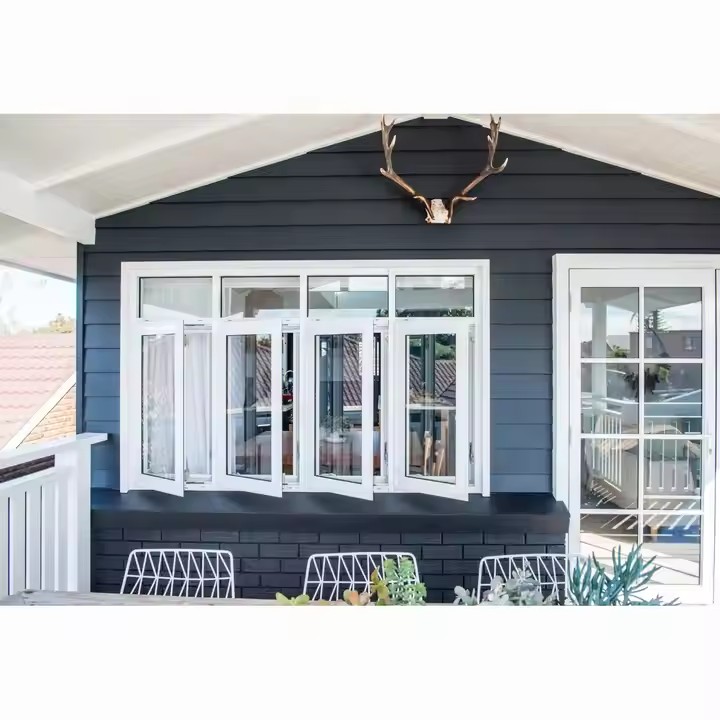Material Selection:
Australian style emphasizes natural and eco-friendly materials while also valuing durability. Chinese folding doors can adopt a combination of aluminum alloy and thermal-break aluminum. For example, some modern Chinese-style folding doors use high-quality aluminum alloy profiles treated with special oxidation for strong corrosion resistance and long-lasting color. The use of thermal-break aluminum helps effectively insulate indoor and outdoor temperatures, meeting Australia’s demand for energy efficiency and thermal performance. Solid wood is also an option—for instance, folding doors with mortise-and-tenon structures not only showcase the charm of traditional craftsmanship but also align with Australians’ preference for natural materials.
Color Matching:
Australian style tends to use neutral tones such as black, white, and gray, while also favoring natural wood colors. Chinese folding doors can opt for classic wood grain finishes, such as walnut or oak, to deliver a natural texture and warm atmosphere that aligns with Australian aesthetics. Alternatively, modern shades like silver-gray or white can create a clean and elegant visual effect. To incorporate Chinese elements subtly, accents of red or gold can be applied to handles or locks—serving as a decorative highlight without being overly flamboyant. Color choices should also align with the interior style; for instance, homes with a classical design may use golden frames to emphasize a sense of luxury and grandeur.

Design Styles:
Simplifying Traditional Elements: Chinese folding doors often feature intricate traditional patterns such as latticework or carvings. To suit Australian style, these can be simplified or abstracted—for example, converting classic lattice patterns into clean linear designs that retain cultural essence while fitting a minimalist aesthetic.
Using Ultra-Slim Frames: Australian design favors clean lines and expansive views. Folding doors with ultra-slim frames meet this preference. For example, the Ouzun Jianyue 4016 slim-frame sliding door features a 1.6 cm ultra-narrow border, significantly increasing the glass surface area. This creates a “separated yet connected” transparent effect—matching both Chinese modern aesthetics and Australia’s minimalist style.
Expanding Glass Area: Australians enjoy natural light. Folding doors with large glass panels enhance brightness and transparency indoors. Chinese folding doors can adopt expansive glass panels with slim aluminum frames, such as the Godeli folding door, which combines sleek frames with oversized glass panels for a clean, modern look that seamlessly integrates indoor and outdoor spaces.
Functional Adaptation:
Track Design: Practicality is essential in Australian style. Folding doors can use embedded or recessed tracks to sit flush with the floor, making them aesthetically pleasing, easy to clean, and free from protruding rails. Smooth and quiet rollers ensure effortless, noise-free operation.

Safety and Energy Efficiency: Australia places high importance on safety and energy performance. Chinese folding doors can be fitted with quality sealing strips and hardware to improve airtightness, providing effective soundproofing, insulation, and dust prevention. Insulated or Low-E glass can further enhance thermal performance and reduce energy consumption. For safety, features such as anti-pinch mechanisms and concealed magnetic locks can protect family members.
Installation and Layout:
Flexible Space Division: Australian homes typically feature open layouts with flexible space usage. Folding doors can divide or connect spaces such as living rooms and balconies, or dining rooms and kitchens, enabling multifunctional living. Fully opened doors expand activity areas, while closed doors create private, independent spaces.
Harmonizing with Surroundings: Folding doors should coordinate with their surroundings. For example, when installed in gardens, they can be paired with common Australian landscaping elements like greenery or pebble pathways to create a natural and harmonious atmosphere. Indoors, the door’s style and color should match furniture, flooring, and walls for a unified look.

